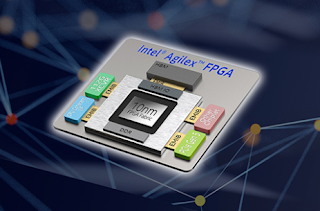SK Telecom has activated a total of 34,000 5G base stations across Korea.
 In a press conference at its headquarters in Seoul, SK Telecom marked "the beginning of the age of Hyper-Innovation with 5G".
In a press conference at its headquarters in Seoul, SK Telecom marked "the beginning of the age of Hyper-Innovation with 5G".
 The company's 5G network initially targets the nation's most data traffic-concentrated areas, including main areas of 85 cities nationwide (Seoul, six metropolitan cities, etc.), university districts, KTX, sports stadiums, expressways, subway lines (Seoul and Seoul Metropolitan Area) and beaches. SK Telecom is also expanding in-building coverage centered around 120 department stores, shopping malls and airports. In the second half of 2019, SK Telecom will expand 5G network coverage to subway systems nationwide, national parks and festival sites.
The company's 5G network initially targets the nation's most data traffic-concentrated areas, including main areas of 85 cities nationwide (Seoul, six metropolitan cities, etc.), university districts, KTX, sports stadiums, expressways, subway lines (Seoul and Seoul Metropolitan Area) and beaches. SK Telecom is also expanding in-building coverage centered around 120 department stores, shopping malls and airports. In the second half of 2019, SK Telecom will expand 5G network coverage to subway systems nationwide, national parks and festival sites.
SK Telecom’s 5G network supports downlinks up to 2.7 Gbps.
New 5GX price plans go into effect on April 5, 2019. Four plans are offered.
SK Telecom said its 5G pricing structure offers the same amount of data at lower prices compared to its LTE service.
https://www.sktinsight.com/111031
 In a press conference at its headquarters in Seoul, SK Telecom marked "the beginning of the age of Hyper-Innovation with 5G".
In a press conference at its headquarters in Seoul, SK Telecom marked "the beginning of the age of Hyper-Innovation with 5G". The company's 5G network initially targets the nation's most data traffic-concentrated areas, including main areas of 85 cities nationwide (Seoul, six metropolitan cities, etc.), university districts, KTX, sports stadiums, expressways, subway lines (Seoul and Seoul Metropolitan Area) and beaches. SK Telecom is also expanding in-building coverage centered around 120 department stores, shopping malls and airports. In the second half of 2019, SK Telecom will expand 5G network coverage to subway systems nationwide, national parks and festival sites.
The company's 5G network initially targets the nation's most data traffic-concentrated areas, including main areas of 85 cities nationwide (Seoul, six metropolitan cities, etc.), university districts, KTX, sports stadiums, expressways, subway lines (Seoul and Seoul Metropolitan Area) and beaches. SK Telecom is also expanding in-building coverage centered around 120 department stores, shopping malls and airports. In the second half of 2019, SK Telecom will expand 5G network coverage to subway systems nationwide, national parks and festival sites.SK Telecom’s 5G network supports downlinks up to 2.7 Gbps.
New 5GX price plans go into effect on April 5, 2019. Four plans are offered.
- Slim offers 8GB of data (1Mbps speed after data cap) at KRW 55,000 month
- 5GX Standard comes with 150GB of data (5Mbps after data cap) at KRW 75,000 per month.
- 5GX Prime comes with 200GB of data at KRW 95,000 per month
- 5GX Platinum comes with 300 GB of data at KRW 125,000 per month

SK Telecom said its 5G pricing structure offers the same amount of data at lower prices compared to its LTE service.
https://www.sktinsight.com/111031















